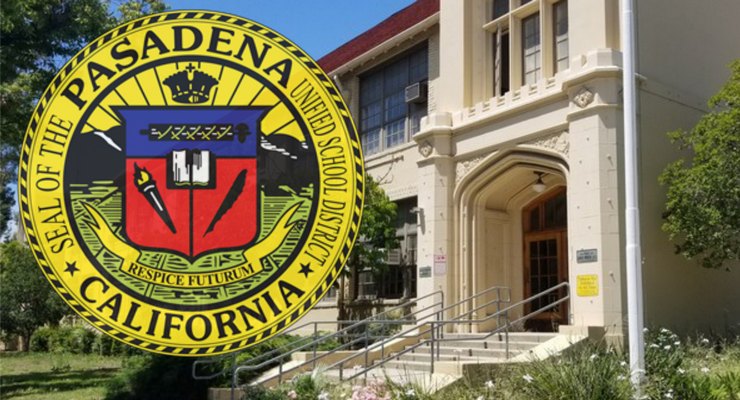
As a longtime resident of Pasadena, I have always been a staunch advocate for preservation and a champion of our public schools. However, I am also deeply committed to the long-term fiscal health of our community. This often puts me at odds with ballot initiatives, particularly those that further burden our residents with higher taxes. Pasadena is already grappling with an extremely high cost of living, and while many of these measures have noble goals, I believe it’s imperative to scrutinize whether they justify their financial impact.
This November, I face a dilemma with several local bond measures. These include Measure PL, a $195 million bond to retrofit and reconfigure the Central Library; Measure R, a $900 million bond for capital projects for the Pasadena Unified School District (PUSD); and Measure EE, a $90 per parcel annual tax that would generate around $5 million per year for eight years to support PUSD programs. While I always evaluate these issues thoroughly, my default position is a “No” vote when I see the potential for increasing the financial strain on Pasadena residents without robust justification.
I want to be clear about where I’m coming from. I’ve always considered myself a preservationist, especially when it comes to Pasadena’s historic architecture and landmarks. I also have a deep-rooted belief in the importance of our public schools and the role they play in strengthening our community. That said, I have concerns about the rationale of these costly measures. Pasadena faces a growing backlog of financial demands, from a shortage of affordable housing, to aging infrastructure and the deferred maintenance of the historic Rose Bowl. Each of these requires thoughtful, balanced, and strategic investments. Too often electeds latch on to high cost solutions ignoring the cumulative fatigue and cost to taxpayers.
Take Measure PL, the $195 million bond to retrofit and reimagine the Central Library. At first glance, I was skeptical, as my assumption was that this was primarily a seismic retrofit project designed to preserve the historic building – certainly worthy goals but not with a $195m price tag. However, after extensive research, I’ve discovered that the scope of the project is far more ambitious. The plan is not just to bring the building up to modern seismic standards, but to reimagine the library as a compelling community asset for the next century.
The proposal includes reducing browsable stacks by nearly 28%, moving portions of the collection to basement-level archival spaces, and adding small-group meeting spaces, expanding the teen room by 33%, and creating gallery spaces. It’s also designed to enhance public areas for community events while preserving the library’s precious historic interior spaces and ornate exterior fabric. This comprehensive approach will ensure that the Central Library remains a relevant and vibrant part of Pasadena’s future while honoring its past. The library will celebrate its 100th birthday in 2027, and I believe this project positions it to serve our community for another hundred years. As someone who cherishes Pasadena’s historical treasures, I feel confident recommending a “Yes” vote on Measure PL.
The situation with PUSD is more complicated. The District is presenting two separate measures: Measure EE, a parcel tax to sustain critical programs and retain staff, and Measure R, a $900 million bond for capital projects. After careful consideration, I’ve come to a mixed conclusion.
I support Measure EE. Our public schools are at a critical juncture, with declining enrollment and increasing competition from independent schools. Investing in programs that retain talented staff and maintain high-quality education programming is essential. I believe that by preserving and enhancing these offerings, we can potentially attenuate the trend of student attrition and potentially even draw some students back to the System. A modest parcel tax to ensure that our schools remain competitive and attractive to new families seems like a sound investment.
However, I cannot support Measure R, the $900 million capital bond. PUSD has experienced years of declining enrollment, with fewer than 15,000 students today (down 40% in the last 15 years) and projections indicating a drop to 10,000 by 2030. PUSD is not alone in facing shifting demographics but faces the additional challenges of numerous and diverse choices offered by independent schools. Given this context, I struggle to understand why the District has not yet taken more decisive action to consolidate its numerous school sites. Our community is fully built-out but desperately needs space for more housing, public parks, and playing fields. Monetizing underutilized school properties could address these important needs while generating critical funds for high priority capital projects. Instead, the District has chosen to defer these politically difficult choices and ask taxpayers for another $900 million, less than five years after securing over $500 million from a previous bond measure in 2020 (Measure O).
I believe the District needs to demonstrate to voters that they are serious about addressing these structural challenges before asking for additional funds. I say come back to us as partners once you’ve done the hard work of consolidation, and I have no doubt that our community will support the necessary investments. Until then, I cannot, in good conscience, recommend a “Yes” vote on Measure R.
In conclusion, I approach these ballot measures with the same lens I always have: balancing the needs of our community with the responsibility to ensure long-term fiscal sustainability. While I have come to support the library project (Measure PL) and believe the parcel tax for PUSD programs (Measure EE) is a reasonable request, I cannot support PUSD’s capital bond (Measure R) at this time. These are difficult decisions, but I believe they are in the best interest of Pasadena’s future.
Andy Wilson is a long time resident of Pasadena and served on the City Council from 2015 – 2022 including as Vice Mayor in 2021 & 2021, and served on the board of Pasadena Heritage from 1996 – 2002.














 12 comments
12 comments


